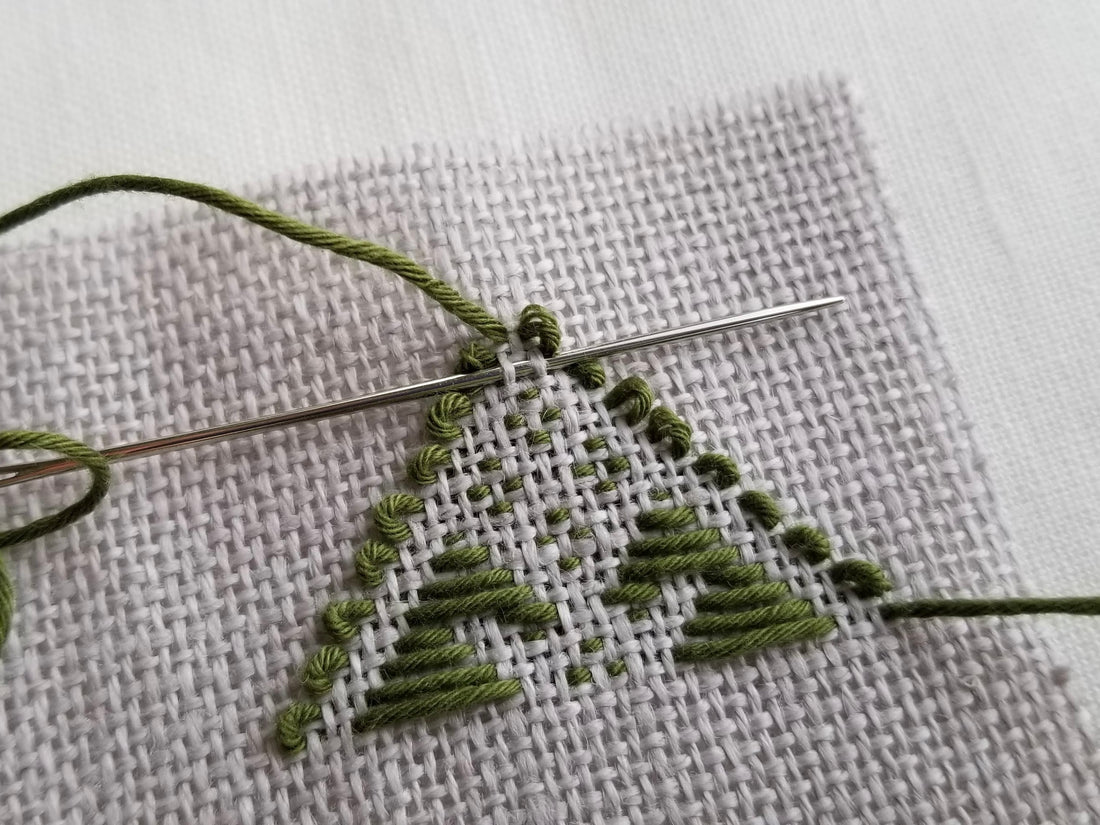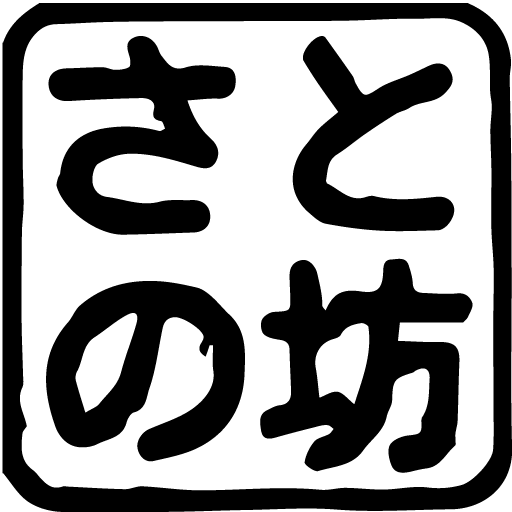
Kogin sashimi thread disposal
◆Basic thread finishing for Kogin embroidery
This is so commonplace that I don't need to write about it, but I'd like to touch on it at least once. In the starter kit I created for people who are just starting out in Kogin embroidery, I've included several other methods in addition to the basic thread tying methods I've shown you here. (I'm considering selling it when I return to Japan temporarily.)
The way to finish threads varies depending on the book or the person teaching you, as well as the item being made and the content of the tailoring (whether the back is part of the piece or is hidden, whether it will be a three-dimensional piece, etc.), so personally I believe there is no correct answer.
This is an example of how to finish the thread at the apex, but you can use the same method to finish anywhere. From the Kogin books I have read so far, it seems that knotting or pinning is generally not used.
① Pierce to the apex

② Pick up two (or four) warp threads from the bottom row (or the row two rows below).

③ Remove the needle and cut the thread about 3 to 5 mm from where it was removed.

Kogin threads are often made by twisting multiple threads together, and there seems to be quite a bit of friction from the moment the thread is threaded through the fabric, so it is unlikely to come loose even with a finishing distance of about 1 cm as mentioned above. If you have ever made a mistake and had to pull out a thread, you will know how difficult it is to pull out a thread at that point.
◆Bonus story My mother learned Kogin embroidery in a high school class, and as a first step in preparation, she cuts the threads to a length that extends beyond the width of the fabric. The threads are completed in one row. The threads are not tied together, and the tailor is asked to tie the fabric with the threads sticking out on both sides of the fabric like sleeves. She enjoyed Kogin embroidery using this method. When she saw me in a book tying the threads like the above, she asked me how I did it. I remember feeling very relieved to find out that there were tailoring methods that were not listed in the book. The fact that there is no correct answer gives me a sense of the lives of people at that time, and makes me feel at ease.
It's not surprising that there are many different ways to finish threads, taking into account various factors such as ease of teaching in class, the content of the assignment, the tailoring content, and use of color.
I hope to continue to relax and enjoy Kogin embroidery! Thank you for your continued support.
▶️Shop (will be open for a limited time when I return to Japan next year)
▶️Instagram (We communicate the simplicity of Kogin embroidery through videos, etc.)
